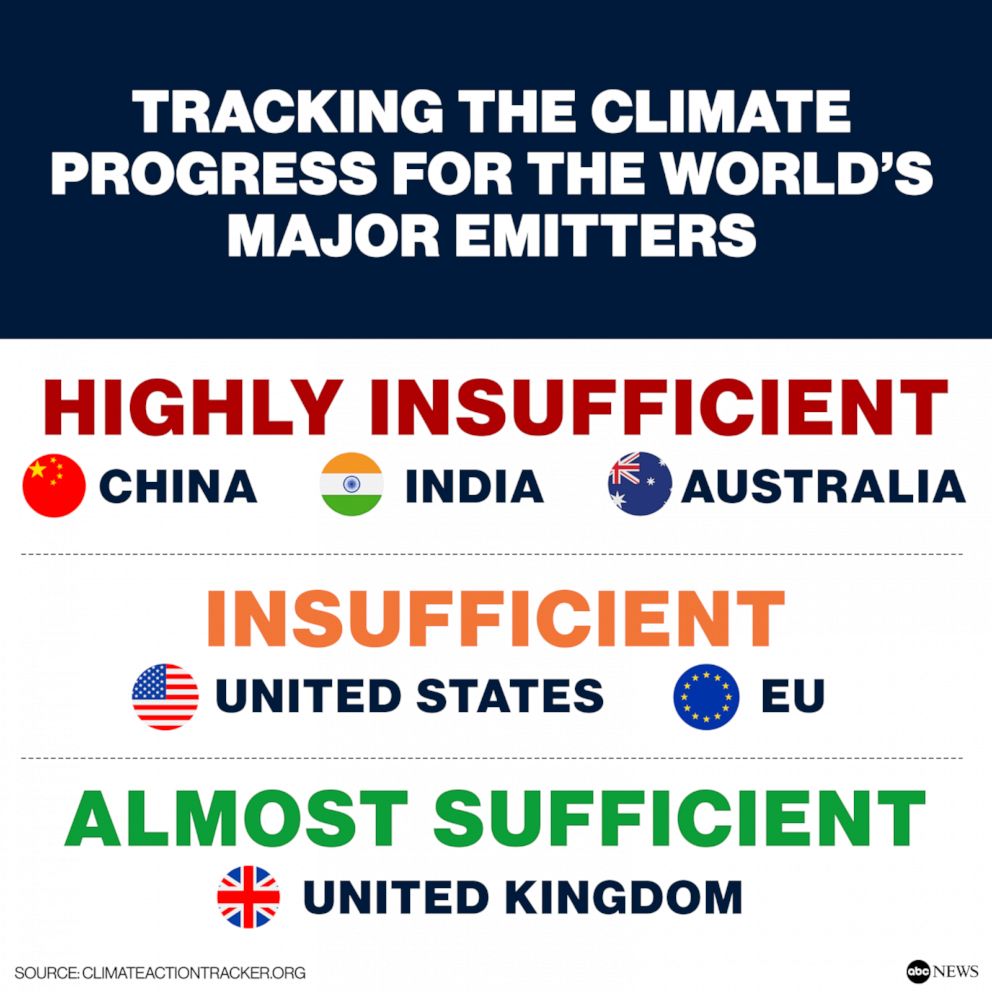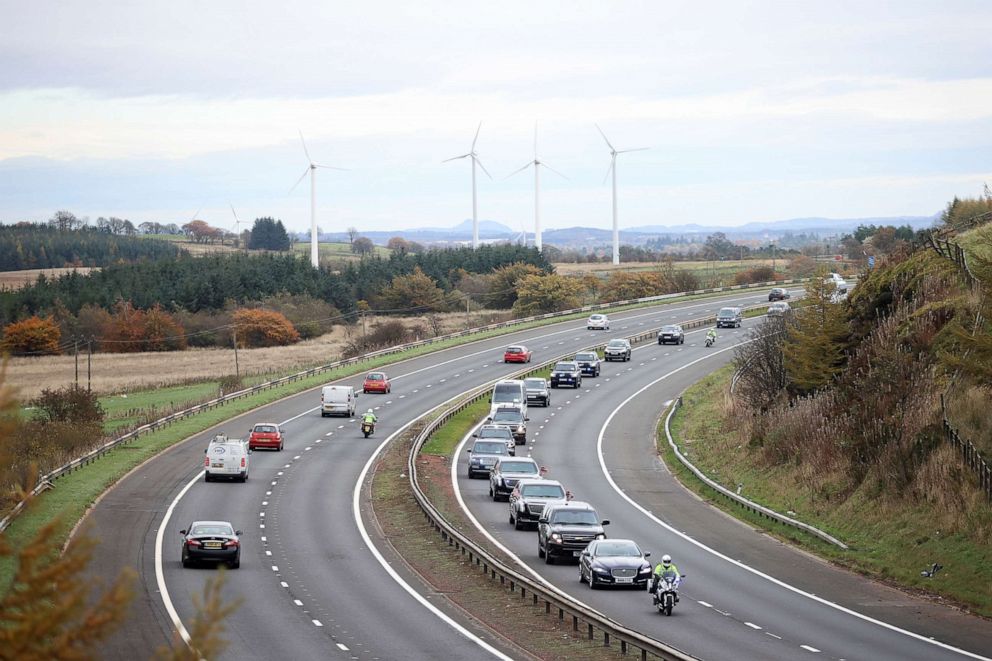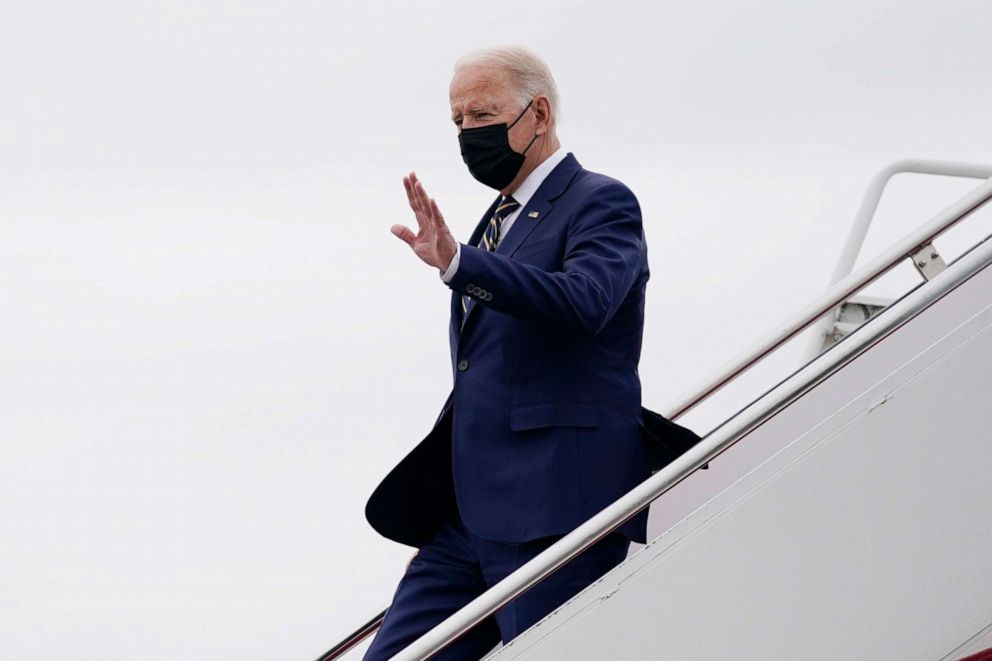How the world’s largest emitters are faring on climate change
No major emitter is doing enough to curb climate change, according to the experts.

Deep divisions still remained about the future of fossil fuels.
Leaders from nearly every country in the world have converged upon Glasgow, Scotland, for COP26, the United Nations Climate Change Conference that experts are touting as the most important environmental summit in history.
The conference, delayed by a year due to the COVID-19 pandemic, was designed as the check-in for the progress countries are making after entering the Paris Agreement, which aims to limit global warming to well below 2 degrees Celsius, a value that would be disastrous to exceed, according to climate scientists. More ambitious efforts aim to limit warming to 1.5 degrees Celsius.
Not one country is going into COP26 on track to meeting the goals of the Paris Agreement, according to experts. They will need to work together to find collective solutions that will drastically cut down on greenhouse gas emissions.
"We need to move from commitments into action," Jim Harmon, chairman of the World Resources Institute, told ABC News. "The path to a better future is still possible, but time is running out."
All eyes will be on the biggest emitters: China, the U.S. and India. While China is responsible for about 26% of the world's greenhouse gas emissions, more than all other developed countries combined, the cumulative emissions from the U.S. over the past century are likely twice that of China's, David Sandalow, a senior research scholar at Columbia University's Center on Global Energy Policy, told ABC News.
No major emitter is doing enough to curb climate change, according to the experts.

Vice President Kamala Harris and U.S. Secretary of Energy Jennifer Granholm will announce the U.S. Department of Energy’s $199 million funding package for projects to reduce emissions from cars and trucks today.
The money will fund 25 projects which aim to lower carbon emissions through alternative-fuel technologies, the electrification of long-haul trucks and the improvement of electric vehicle charging infrastructure.
“This investment and the innovations that come from it will help shape our clean energy future and strengthen domestic manufacturing that support good-paying careers for hardworking Americans,” Granholm said in a statement.

The funding is split between the Office of Energy Efficiency and Renewable Energy’s ongoing SuperTruck Initiative and the Low Greenhouse Gas funding selections.
According to the press release, carbon pollution from transportation accounts for nearly 29% of all U.S. emissions, more than any other single sector.
President Joe Biden has landed in Edinburgh, Scotland, ahead of the COP26 summit.
Air Force One landed just before 7 a.m. ET. Biden traveled to the United Kingdom after attending mass in Rome Monday morning at the Villa Taverna in observance of All Saints Day.

The president did not take any questions after he arrived but chatted briefly with the greeters before getting in his motorcade.
-ABC News’ Molly Nagle
President Biden is entering the COP26 summit on “strong footing” due to his unprecedented efforts on climate change, including the Build Back Better framework that marks the largest investment in climate policy in history, said White House National Climate adviser Gina McCarthy told reporters on Monday.
"This is a message you're going to see from the president over the next two days and from dozens of Cabinet officials will be in Glasgow over the next two weeks," McCarthy said. "The United States is back at the table. We're back hoping to rally the world to tackle the climate crisis. And we're going to bring back jobs and economic prosperity to our workers in our families in the United States."

On Monday, the U.S. will release its long-term strategy report that details how the country will achieve net zero emissions by 2050. The report illustrates the actions needed — including decarbonizing the power sector, electrifying transportation and buildings, transforming industry reducing non-CO2 emissions and reinvigorating natural lands — to reach carbon neutrality within the next three decades.
The release of the report is part of a deal the U.S. made with China, McCarthy said.
-ABC News’ Stephanie Ebbs